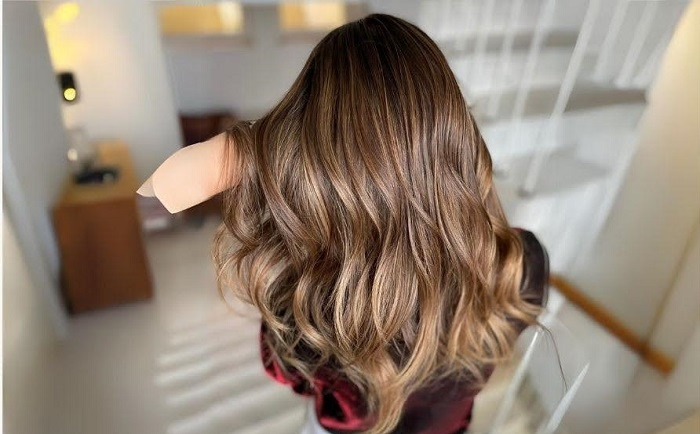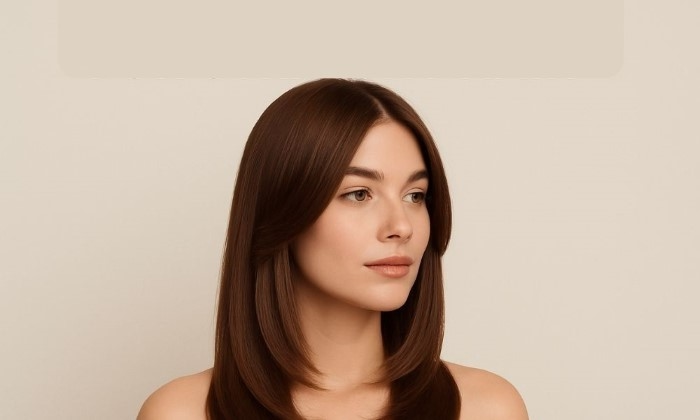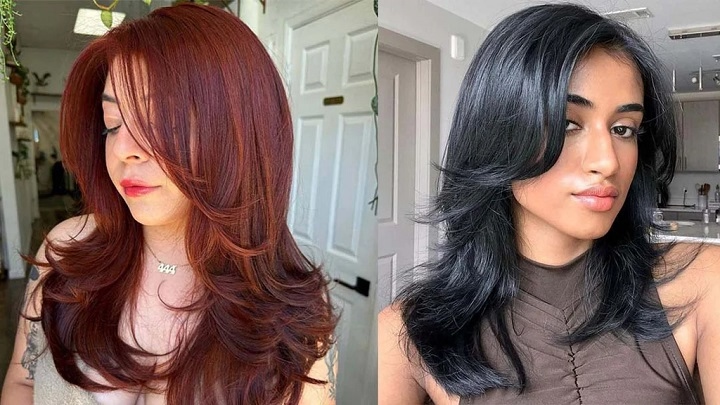The butterfly cut is a contemporary classic, one which delivers movement and face-softening layers without taking away too much length. The style may be depicted on both curly and wavy hair, but it is also a transformation on straight hair. They produce sleek textures, with the butterfly cut creating depth, elevation of the crown and gentle framing of cheekbones and jawlines. Maybe you have straight hair and fancy a new look that re-invents your haircut and makes it photogenic, flattering, and wearable every day. This guide will tell you all about it: what the cut will be, why it is perfect for operating your straight hair, how to style it and take care of, and what to say to your stylist.
What is this butterfly cut?
A butterfly cut is a two tier layering technique; shorter face-framing layers are cut in front, as well as at the crown; longer layers maintain the overall length. The shorter lengths, which are less than what the tiers are spread outward, are known as the wings and the longer ones spill out. On straight hair the effect is particularly crisp: the layered pieces create visible separation and movement that would otherwise be missing from uniformly long, blunt ends.
Key features:
- Shorter, cheekbone- or chin-level face layers
- Longer, blended lengths at the back
- Soft, feathered ends rather than blunt slicing
- Balanced volume at the crown without bulk
Why the butterfly cut works well on straight hair

Straight hair showcases shape and structure—so a haircut that introduces deliberate shape makes an immediate visual difference.
- Dimension and depth. Straight strands can look flat; layers add lines and break up the single plane.
- Noticeable face framing. The front wings sit smoothly around the face, highlighting bone structure.
- Polished movement. Blowouts and sleek styles reveal the cut’s architectural shape.
- Versatility. The same cut looks elegant when straightened, soft when waved, and undone with a light texturizer.
- Keeps length. You get the fresh feel of a shorter style in the front while keeping long hair in the back.
Who should consider a butterfly cut if their hair is straight?
The butterfly cut is highly adaptable, but it’s particularly flattering for:
- Oval faces: enhances natural symmetry.
- Round faces: front layers create vertical lines that elongate.
- Square faces: soft layers temper strong jawlines.
- Heart-shaped faces: fills the lower face and balances a wide forehead.
If your hair is finer, the cut creates the illusion of thickness; if it’s thick, a stylist can remove interior weight so the layers float rather than puff.
Length variations: short, medium, long
- Short (pixie to bob range): Face-framing wings and a structured perimeter give short hair greater interest and movement.
- Medium (lob to shoulder): This is the sweet spot for many—enough length for drama, short layers for lift.
- Long: Maintains sweeping length while adding lift at the crown and lightness at the ends.
You can adapt the “wing” length to suit your preference—cheekbone, chin, or collarbone—so the cut works with your daily routine and styling stamina.
How to ask your stylist (what to say in the chair)
Bring photos. Then say something along the lines of:
- “Cut my hair into a butterfly look – with face-framing layers that are shorter and hit right at my [cheekbones/chin] and long layers in the back that keep the length low.”
- “Oh please leave the ends soft & feathered- no blunt cutting!”
- “My hair is super straight and I wear it sleek most of the time—use it when you do the blow outs with some lift on the crown.”
- Let them know how you style your hair on a daily basis (air-dry vs. daily blowout) so they can layered and textured it just right.
Step-by-step styling for straight hair
Smooth Fastidious appearance (work/day, function)
- Put on lightweight volumizing mousse and a heat protectant to damp hair.
- Blow out with a medium/big round brush lifting at the crown, rolling the ends out hair towards the face.
- If you want glassy shine, smooth surface in a flat iron–run iron over the sections, and with a round brush, shape up the front pieces to bend.
- Seal and use a light shine serum on the mid-lengths and flexible hairspray to hold.
Natural movement that is soft
- Apply some styling cream and spray on some thermal protectant on wet hair.
- Blow-dry upside down to achieve lift and then turn upright and give a final run-through with a paddle brush by waving at the ends.
- Finger-comb or use a big-barrel curling iron at will, bending n ends out a bit.
Day-two refresh
Apply some dry shampoo to the roots and a dose through the mid-lengths of a texturizing spray and brush the front pieces through to re-fluff the crown.
Best products for butterfly cut on straight hair

- Volumizing mousse (root bounce without stiffness)
- Heat protectant (essential for repeated styling)
- Lightweight smoothing serum (tames flyaways without weighing down)
- Texturizing spray (adds separation on second-day hair)
- Flexible hairspray (holds shape but allows movement)
Avoid heavy oils or thick creams that collapse the layered separation.
Maintenance: trims, tools and timing
- Trims: Every 8–10 weeks keeps the face frame crisp and prevents tips from looking blunt.
- Salon shape-ups: Ask for quick “dustings” between major cuts if you prefer low maintenance.
- Tool care: Always heat protect; straight hair shows damage quickly.
- Home care: Use a lightweight conditioner to keep ends healthy and a weekly hair mask for strength if you heat-style frequently.
Common mistakes to avoid
- Over-thinning fine straight hair: It can create gaps; aim for subtle debulking instead.
- Too much product: Heavy creams equal limpness—use lightweight formulas.
- Starting layers too high for face shape: For round faces, start layers below the cheekbone to avoid widening.
- Skipping consultation photos: Visuals prevent miscommunication.
Styling variations to try
- Butterfly cut with curtain bangs: A fashionable pairing that blends bangs into the wings.
- Polished butterfly: All straight and glossy for a formal look.
- Edgy butterfly: Shorter wings and a blunt back for a modern, graphic silhouette.
- Color-enhanced: Babylights or subtle balayage on face layers create extra depth and movement.
Comparison: butterfly cut vs. traditional layers on straight hair
The butterfly cut emphasizes visible shorter vs. longer contrasts and soft feathering to produce a “wing” effect. Traditional layers may be more evenly distributed and less focused on face framing. If your goal is a distinct, youthful face frame and crown lift while retaining length, butterfly cut is the targeted choice.
FAQs
Will a butterfly cut make straight hair look thicker?
Yes—strategic layering and root lift give the impression of fuller hair without adding weight.
Can I air-dry this cut and still get the effect?
You can, especially with a volumizing mousse and a root lift spray; but a brief round-brush blowout accentuates the wings most effectively.
Is it high maintenance?
It requires periodic trims (8–10 weeks) and basic styling; daily time depends on how polished you want your finish.
Does it work with fine, stick-straight hair?
Absolutely—ask the stylist for subtle internal layering and product suggestions to maximize volume.
How does it grow out?
Butterflies grow out gracefully because the layered structure softens over time rather than becoming a blunt, awkward line.
To those with straight hair who desire to give their looks some character, the butterfly cut provides a flattery combination of substance, movement, and face framing glamour. It can be worn with a variety of face shapes and lifestyles and again with the proper cut and the adoption of a few styling customs it is never hard to handle. The most important lesson to remember is this: bring pictures and tell your stylist how you normally wear your hair- having the wings fitted to your life will make the cut feel made-for-you and something you can wear comfortably immediately.

